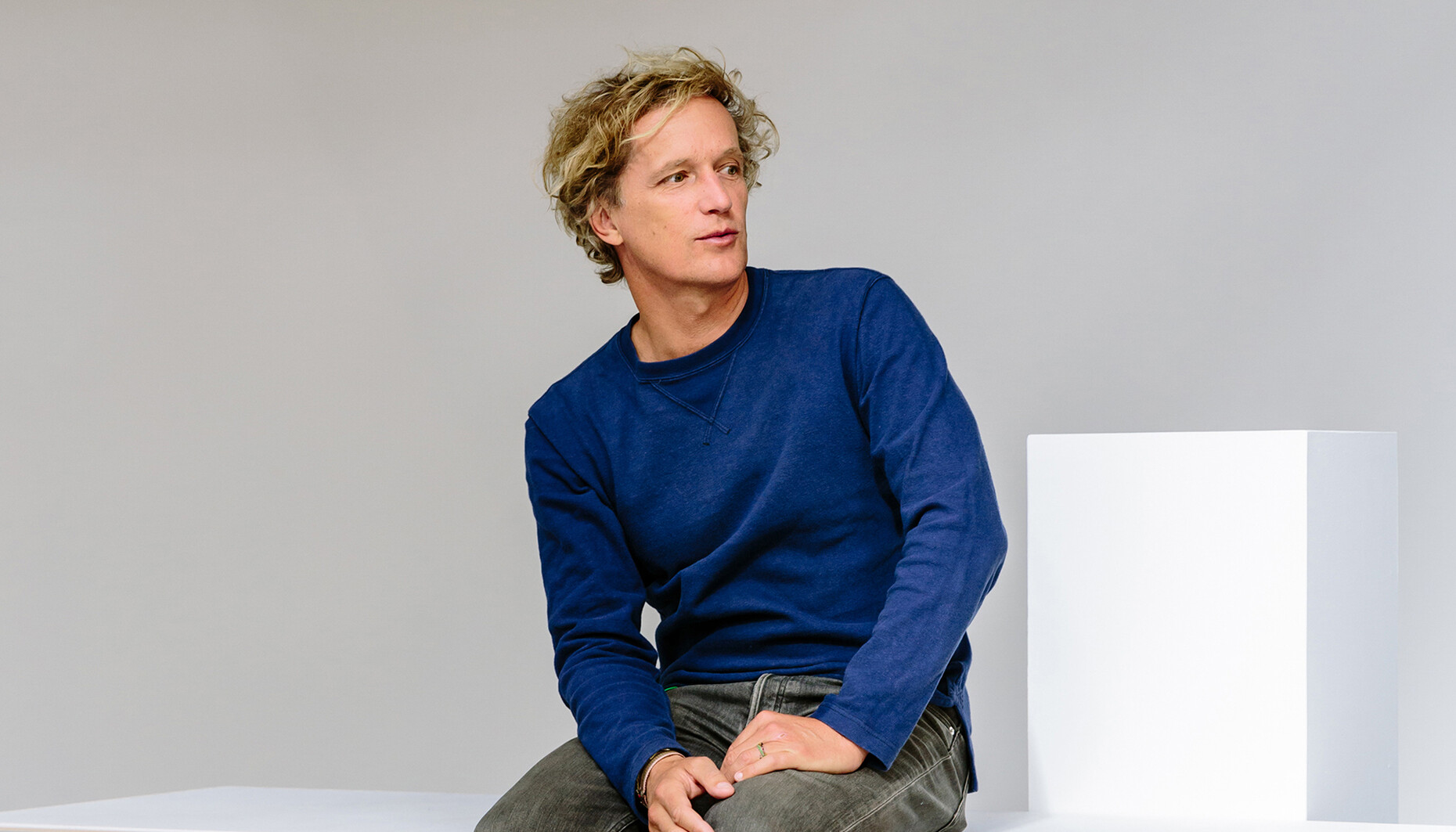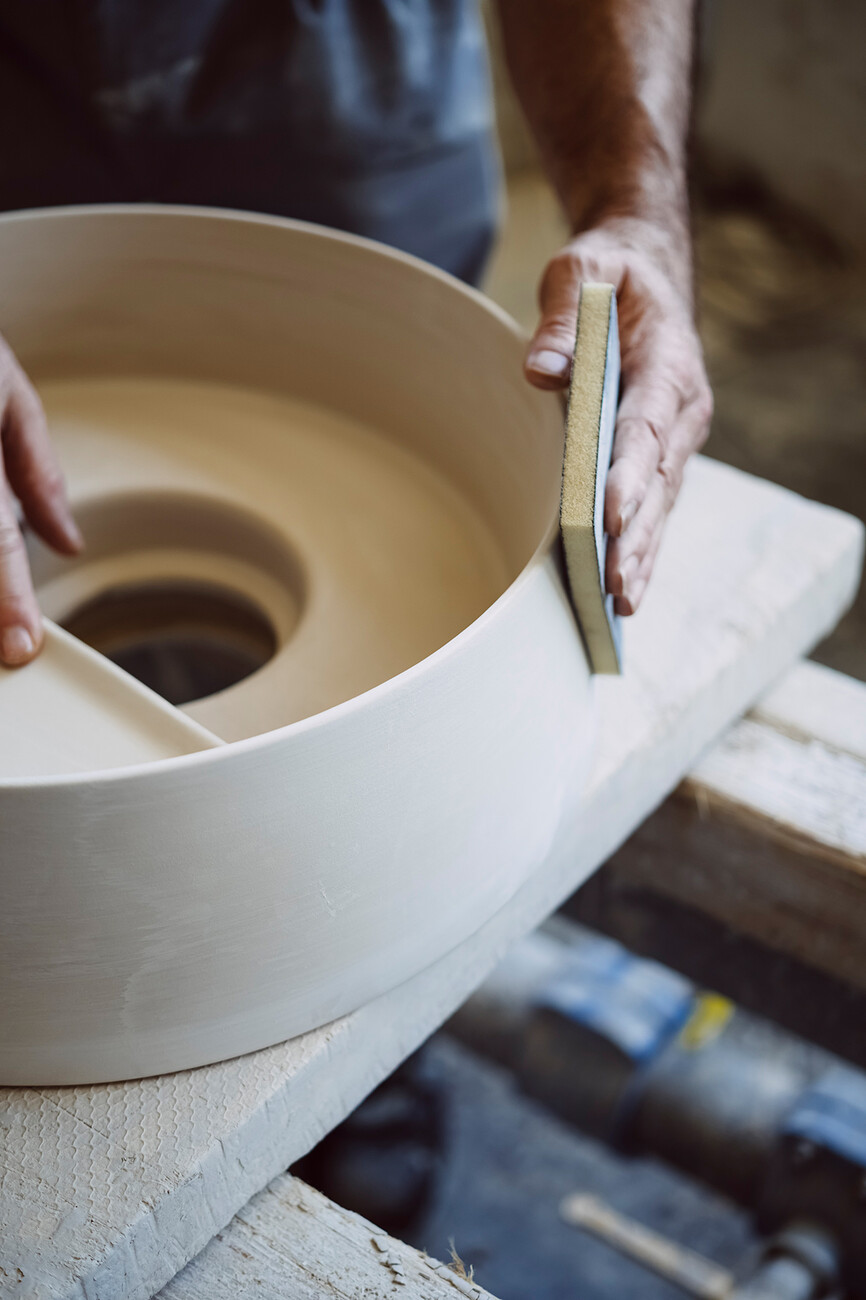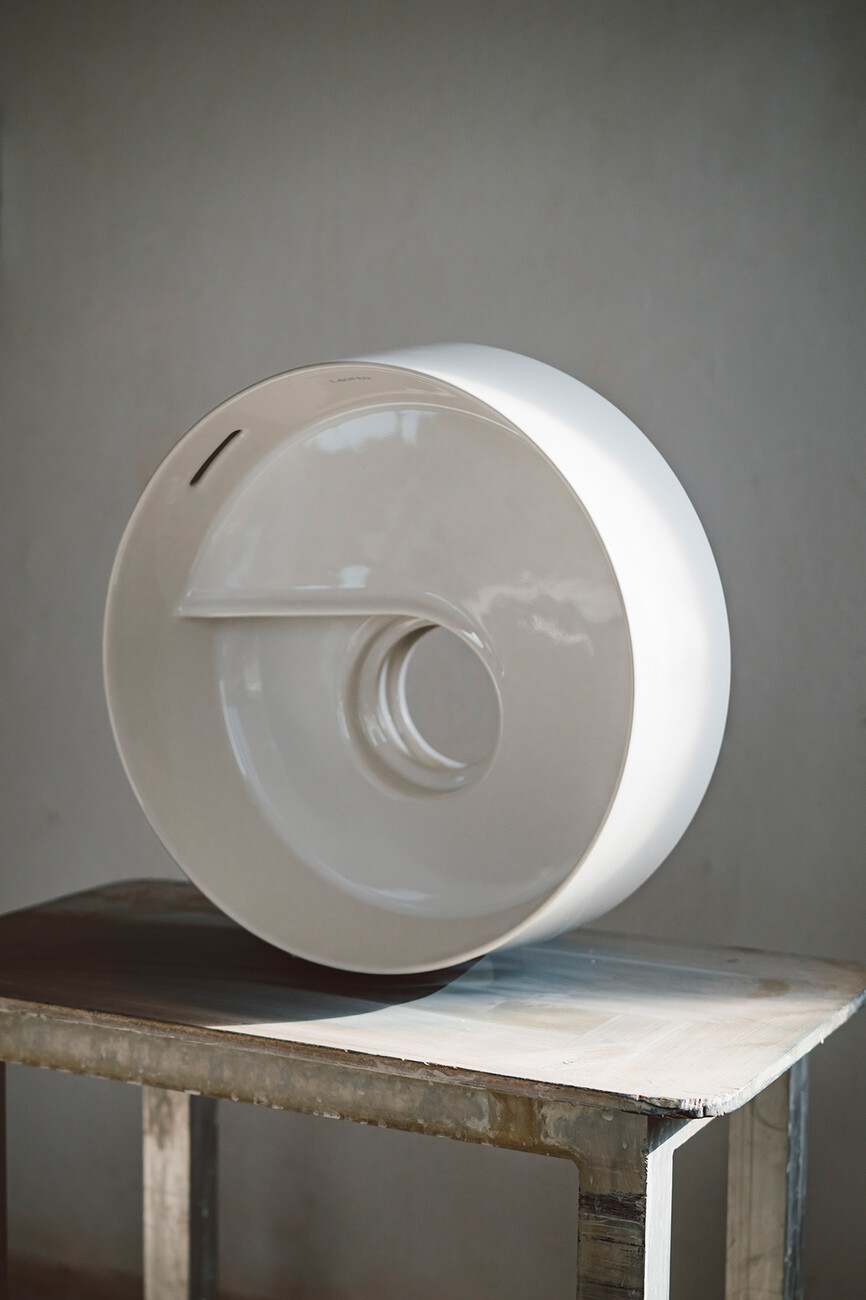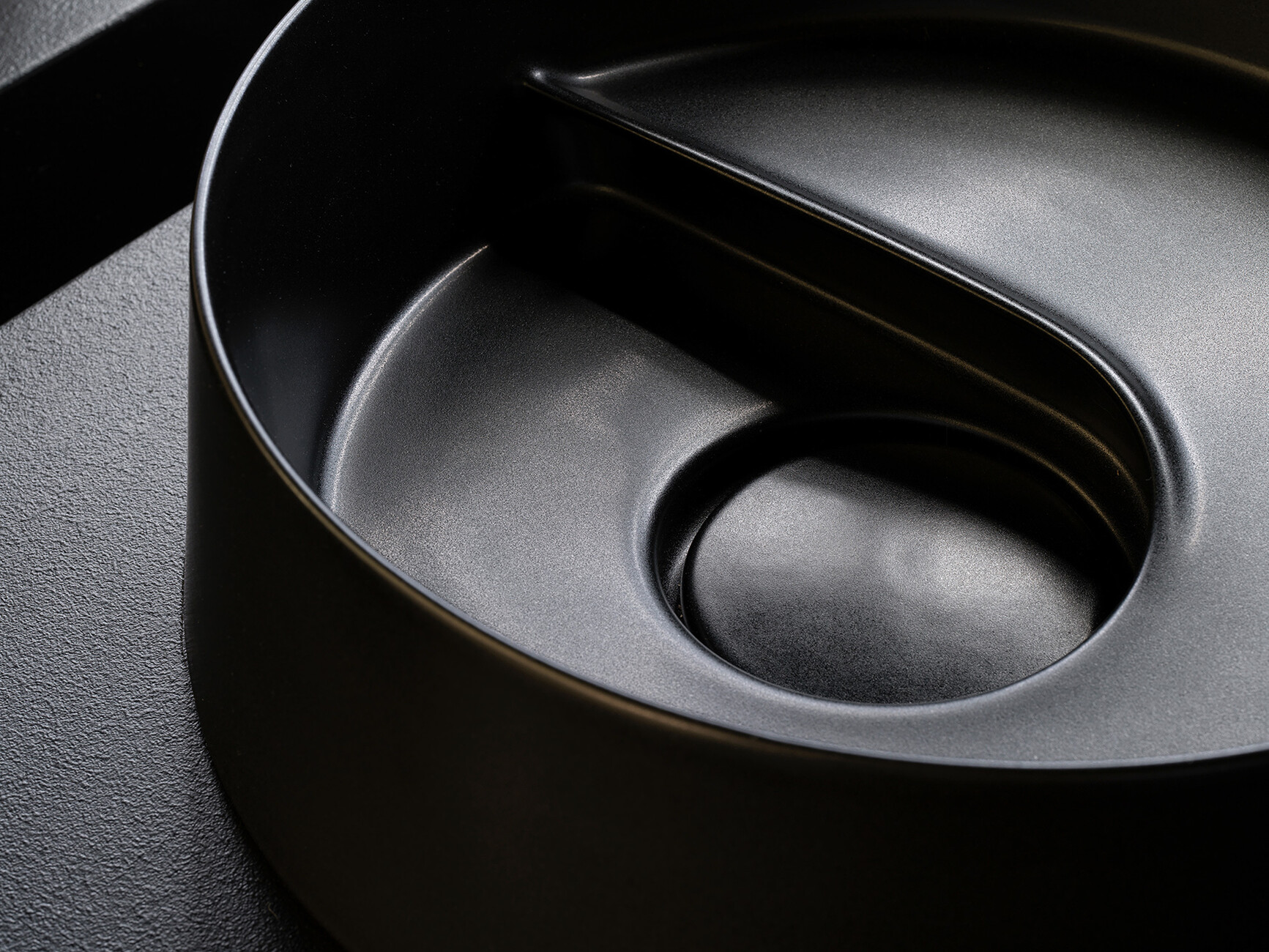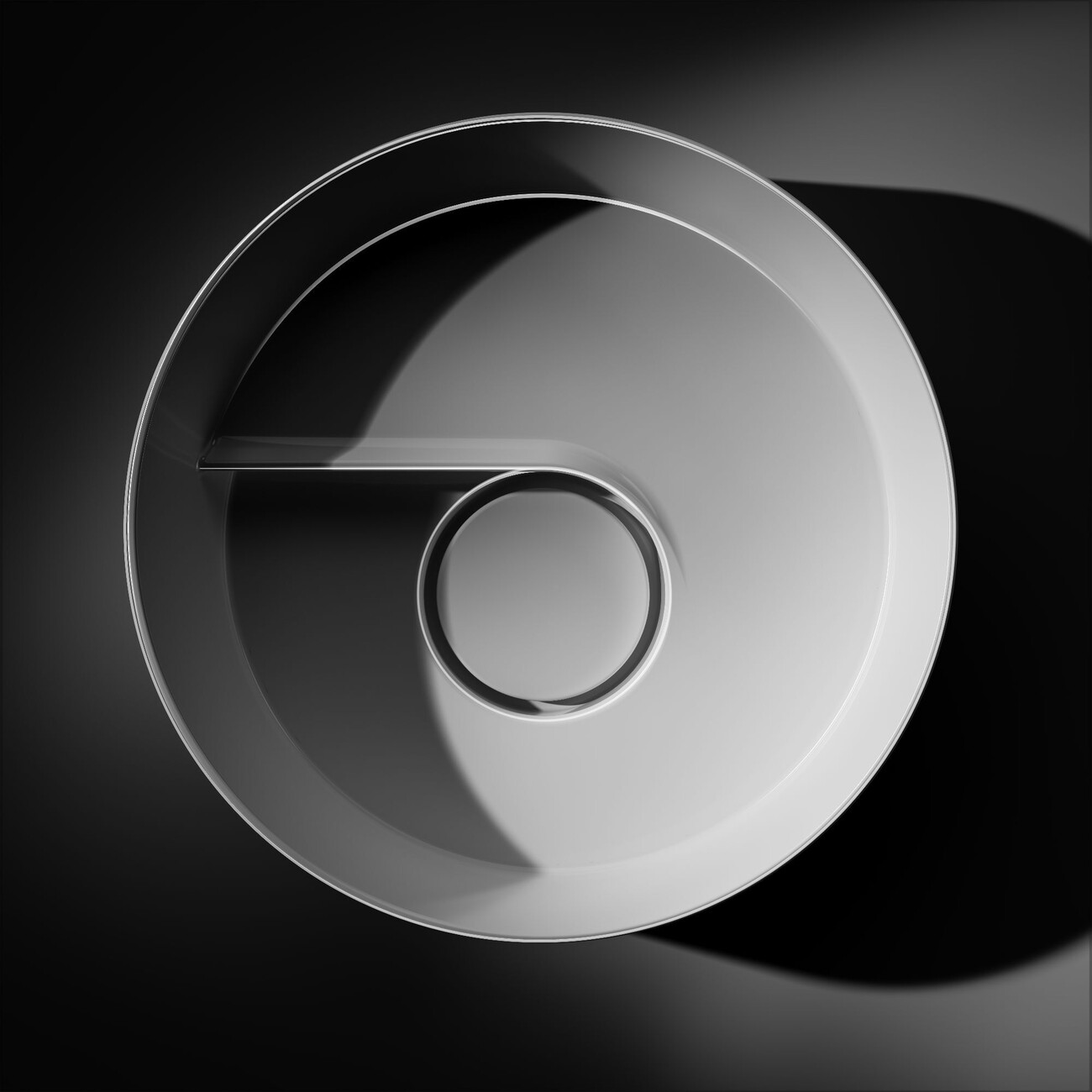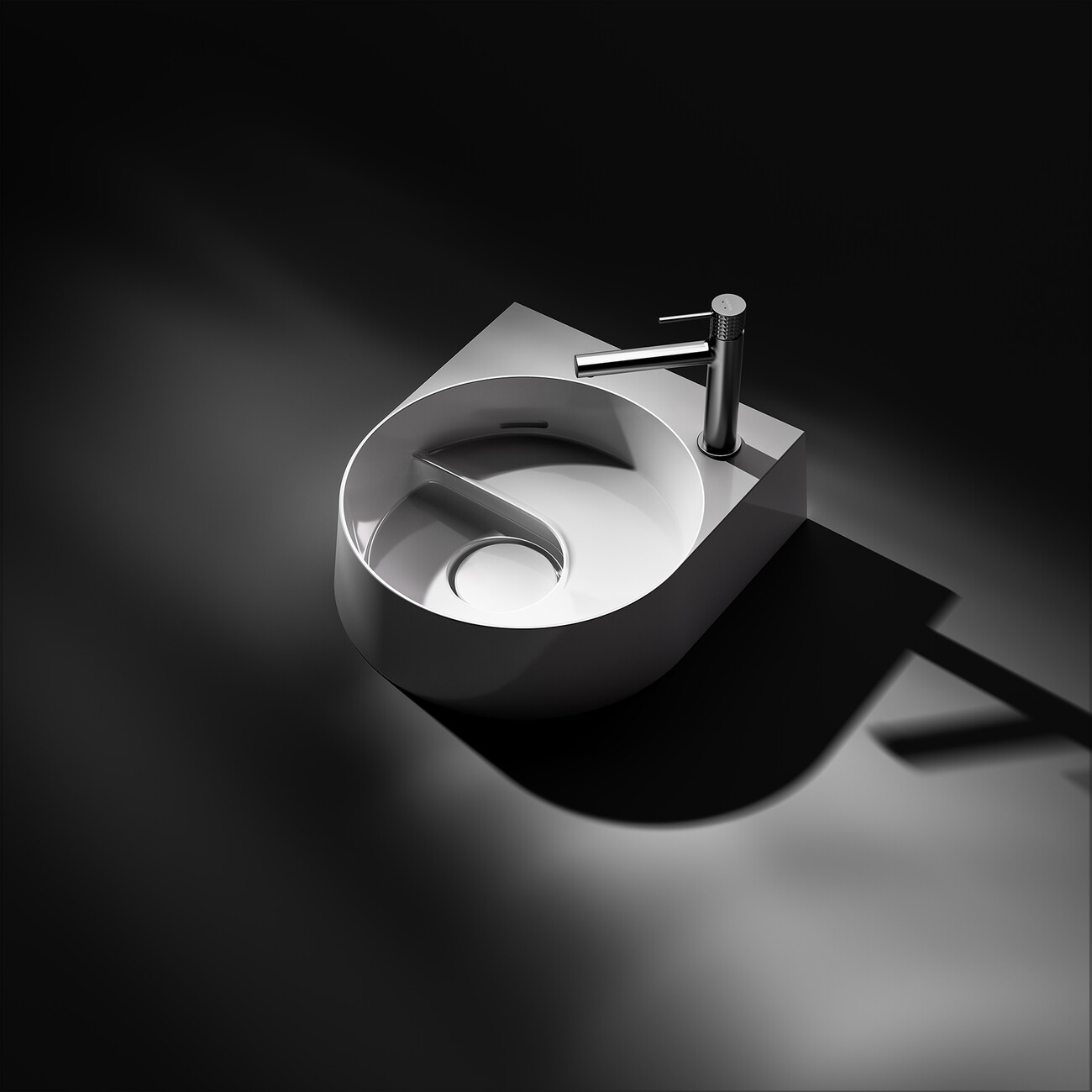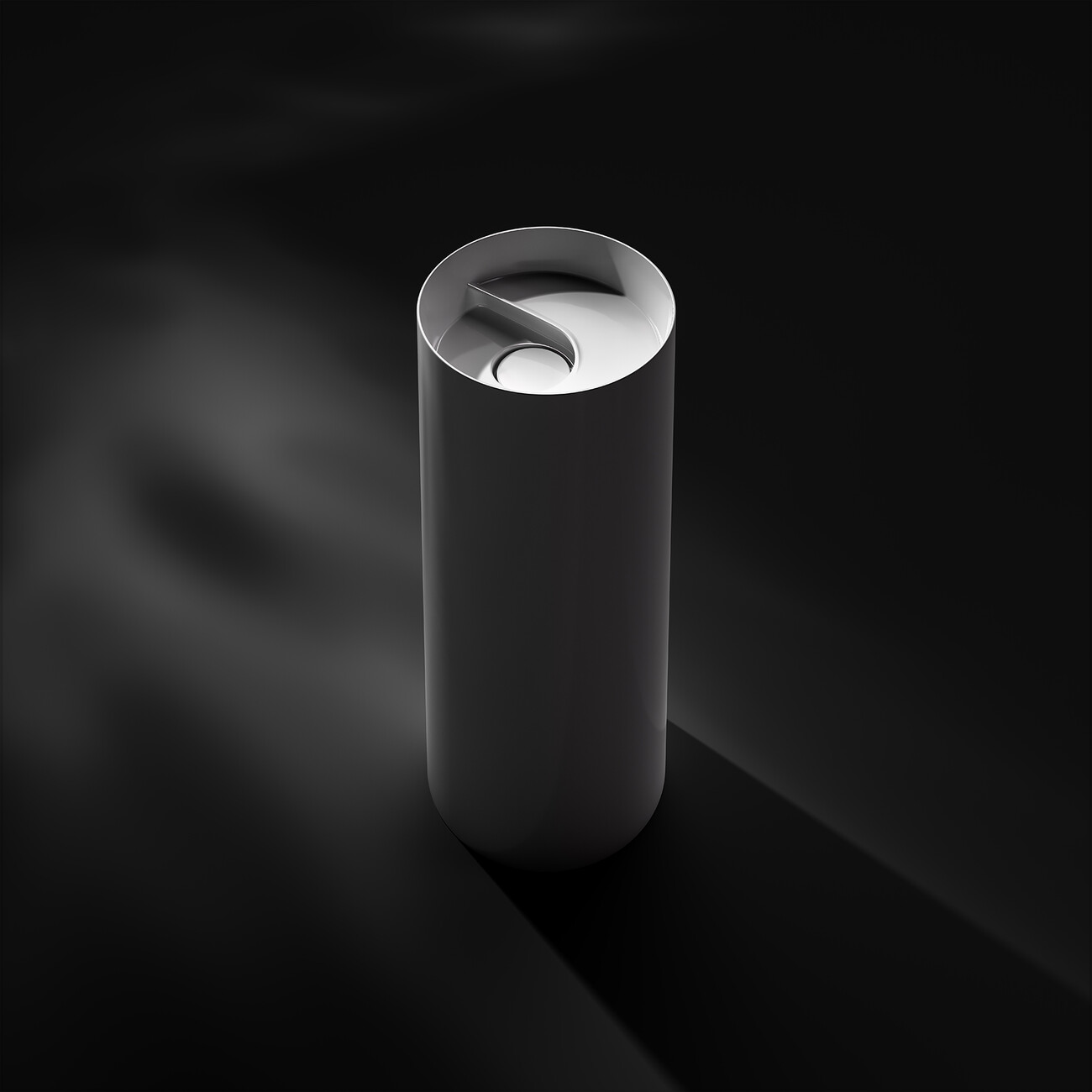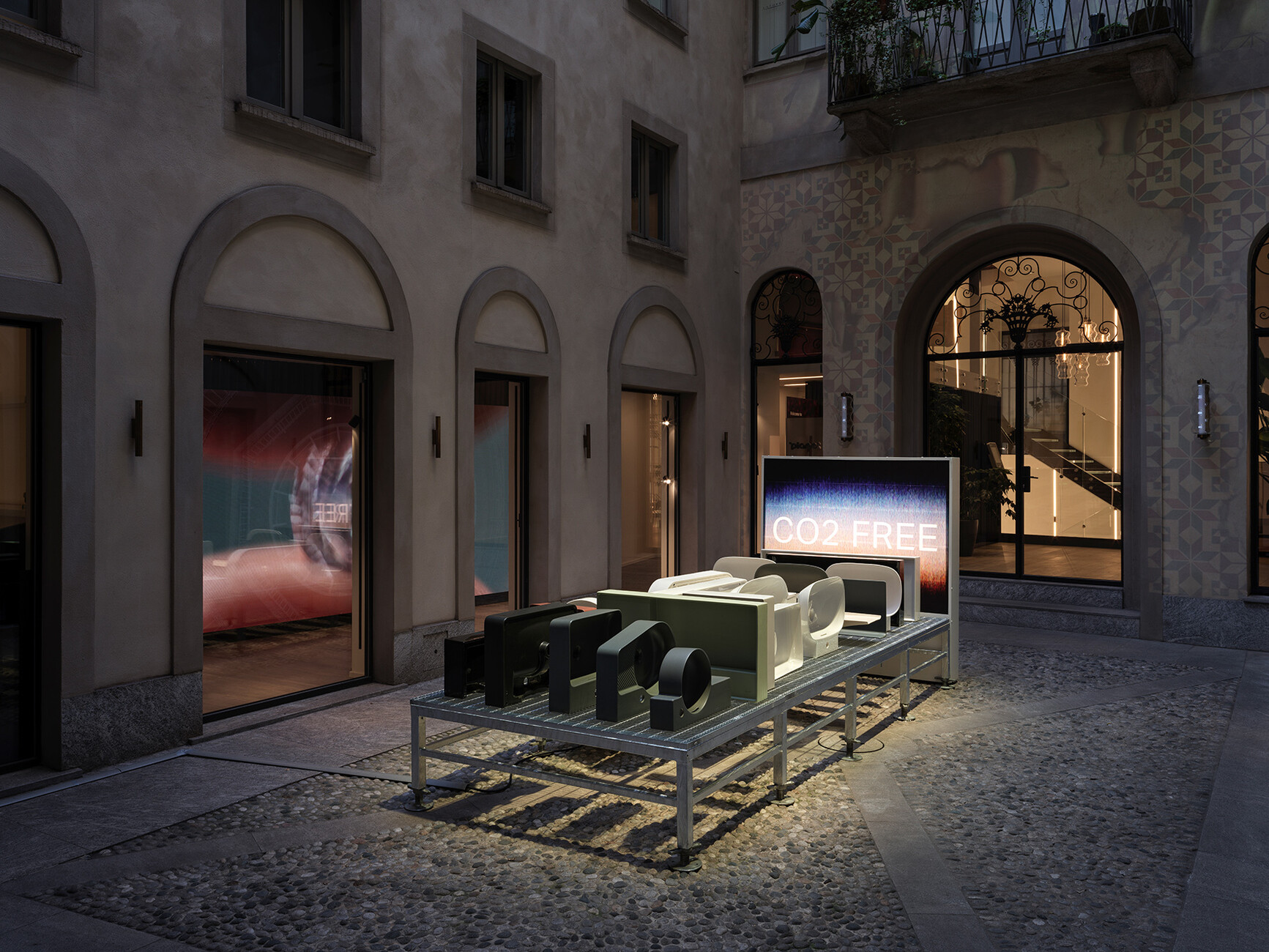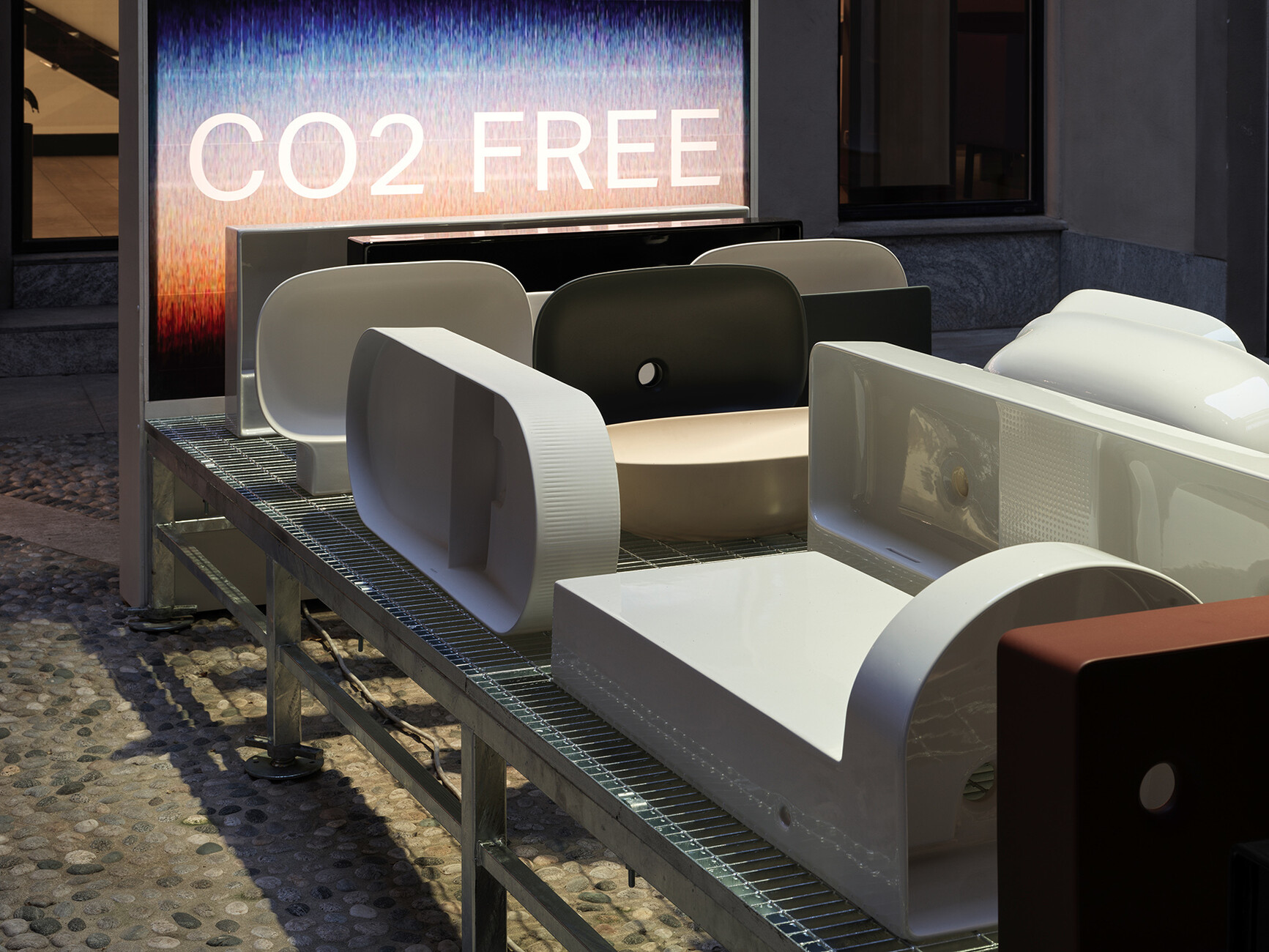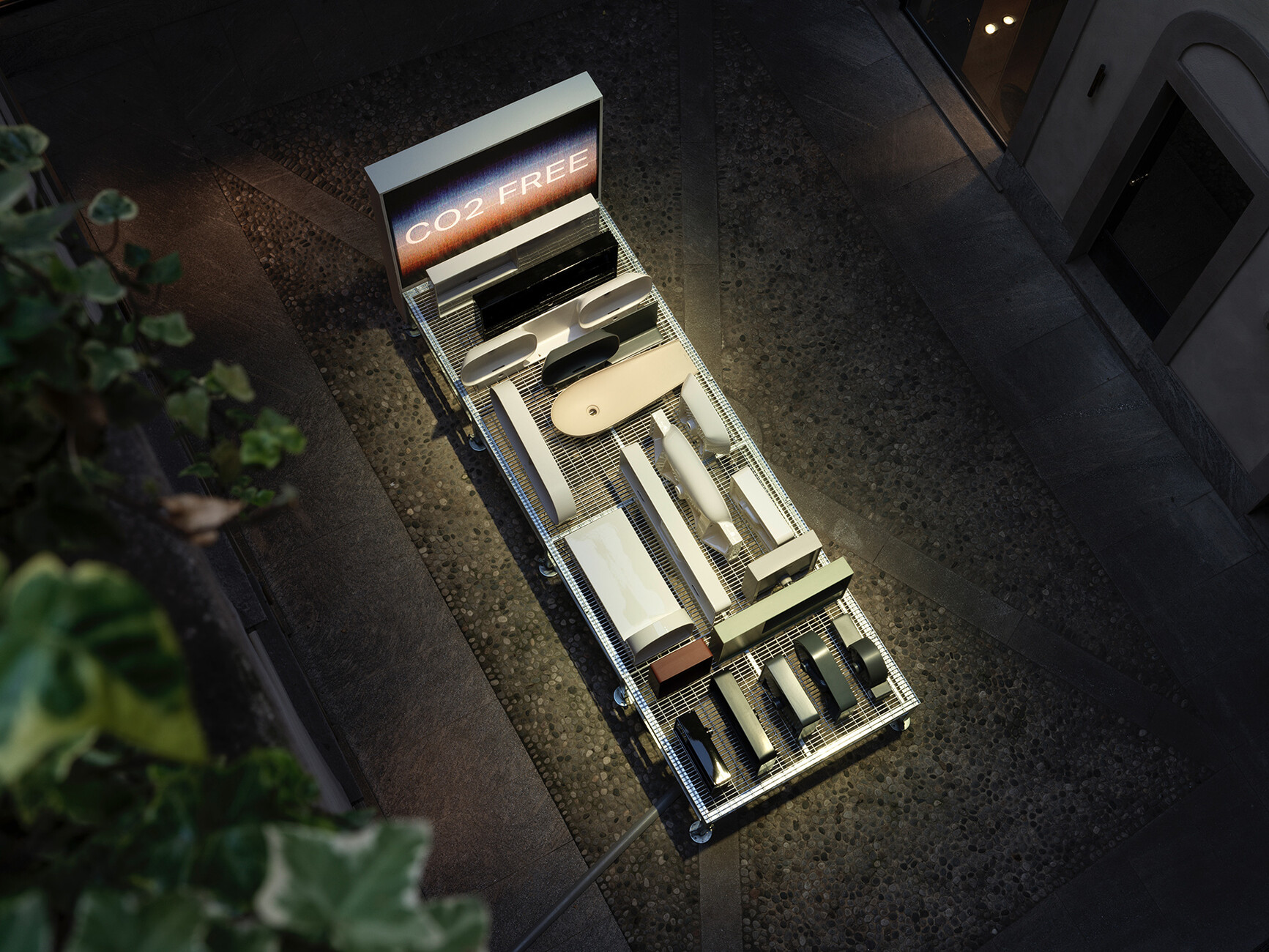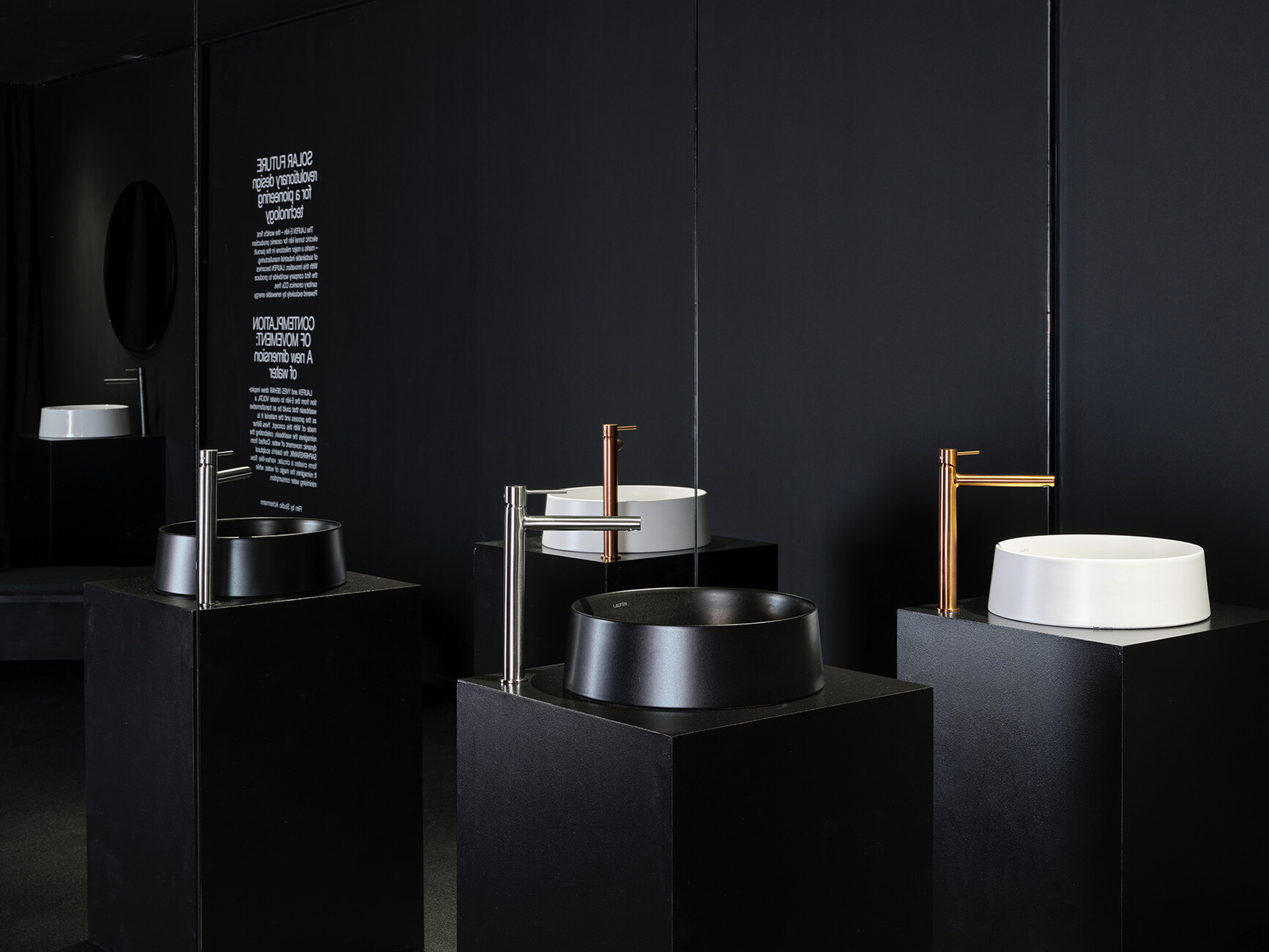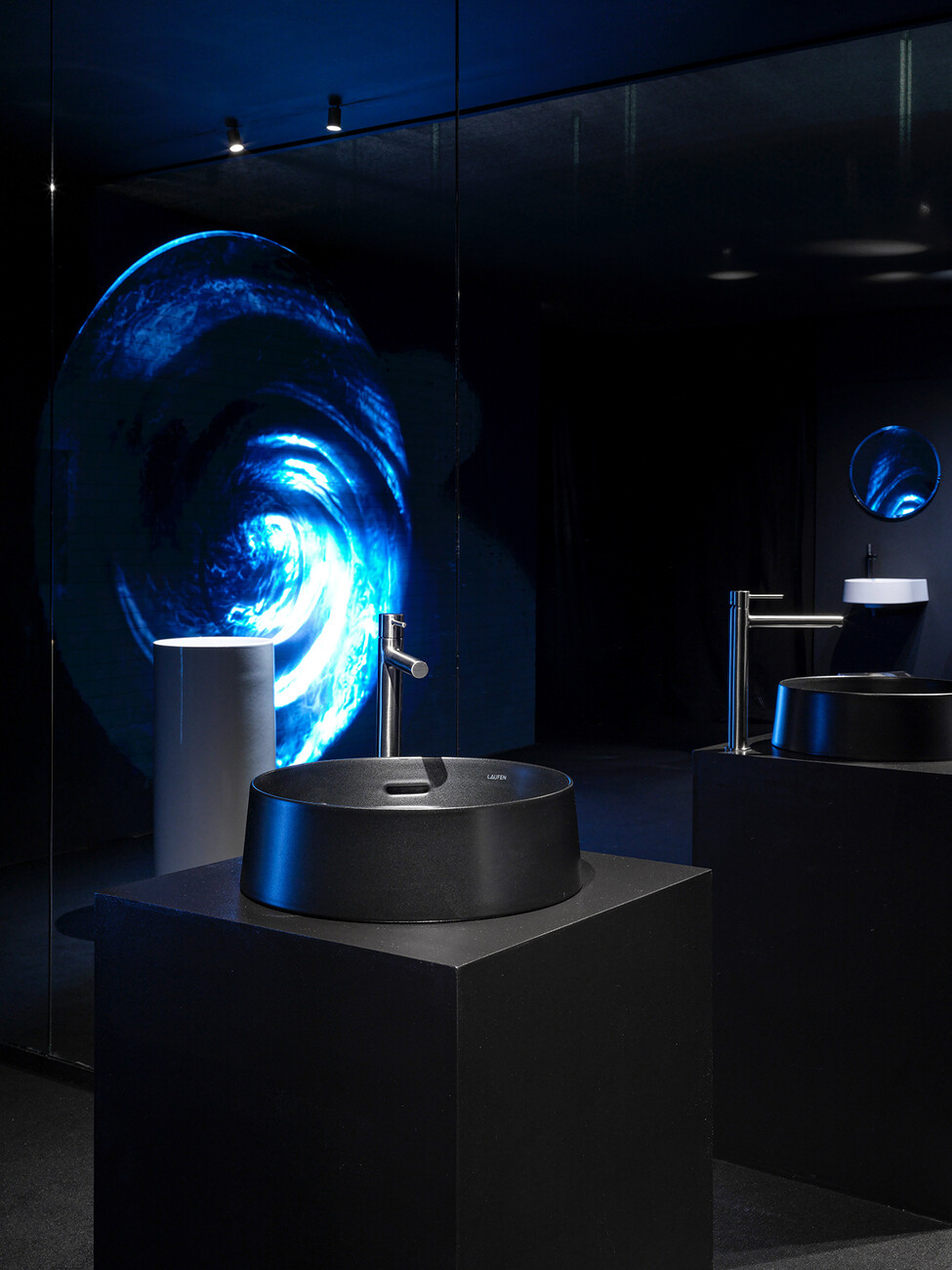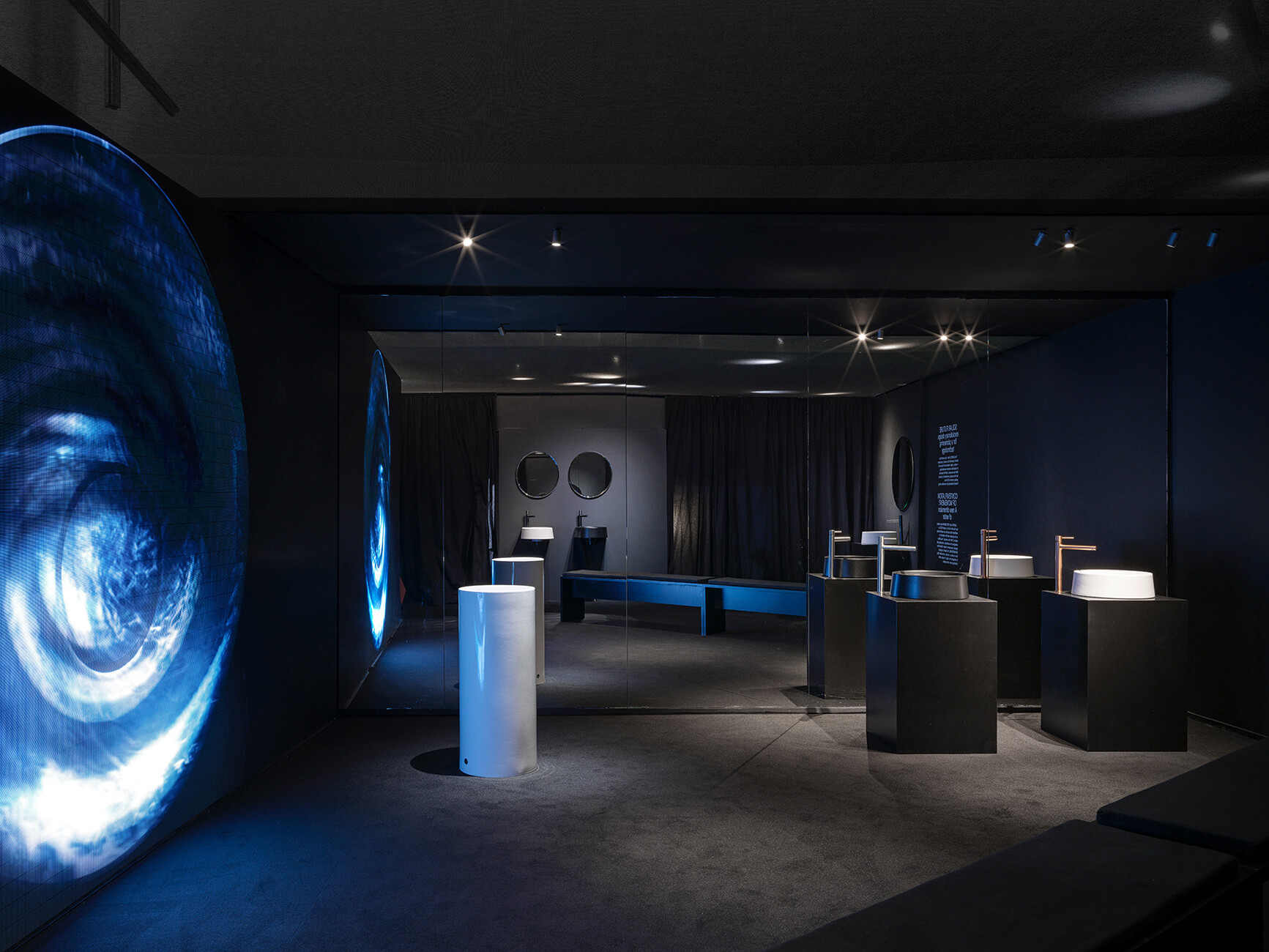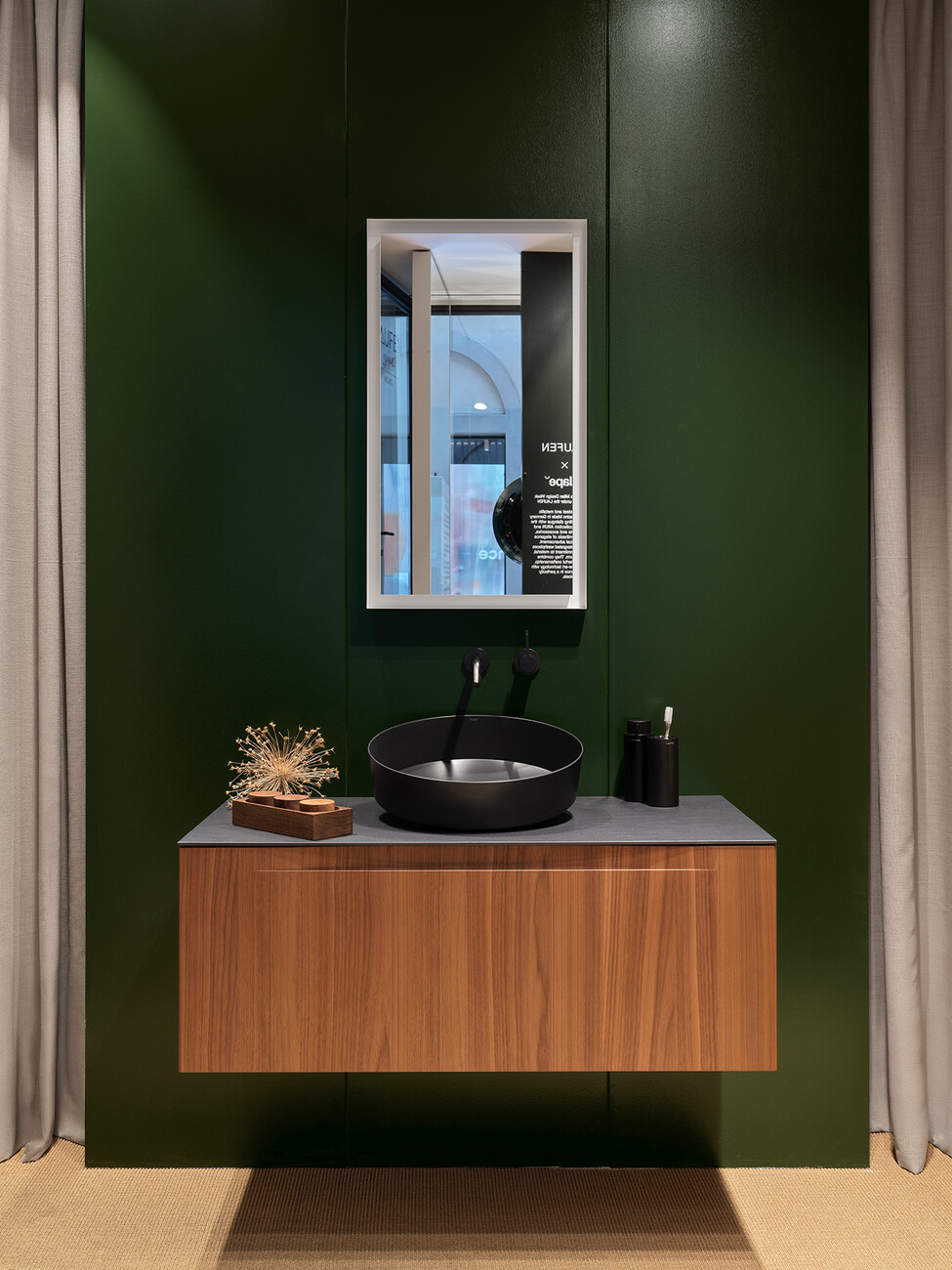Featured
Swimming against the tide
Anna Moldenhauer: Laufen gave you a free hand with the design, but it was also your first project in sanitary ceramics. How did you approach the topic?
Yves Béhar: The first meeting with Marc Viardot, the Corporate Marketing and Design Director of the Roca Group, took place ten months ago, and we started the project eight months ago. So it all happened pretty quickly. I went to see the world's first electric, CO2-free tunnel kiln at the site in Gmunden and was really impressed by the commitment to sustainability and the vision that the team has realised. And this is just the beginning. Laufen gave me an open brief: The brief was to design a product that would support and optimise the idea of a sustainable bathroom. So there was plenty of room for my own ideas. Taking risks and thinking about innovations suits my personality well. I hadn't designed bathroom ceramics before, but I grew up with water on Lake Geneva. As a swimmer, windsurfer, kite surfer, surfer and now big wave surfer, the water has a very strong influence on my life. Water and swimming are the basis for the stages of my life so far: I moved to San Francisco because I wanted to be near the ocean. That's also why I have an office in Lisbon. In ‘traditional’ bathrooms, on the other hand, the water runs from the tap straight down the drain. This source of pleasure, of physical and tactile connection, this precious resource – gone in seconds. I wanted to find a design that would help us to spend more time with water in the bathroom and at the same time promote a more conscious use of this resource.
The sapphire ceramic washbasin reinterprets the movement of water through a swirling vortex. In the process, the water flow and self-cleaning are sustainably optimised. What did it take to realise this idea?
Yves Béhar: The idea of creating a vortex and letting the water circulate around the washbasin was also spiritually beautiful for me. We wanted to simulate the way water circulates in nature. The software wasn't able to replicate this dynamic, so we built a series of models and tested them in the studio. The advantage of the current shape is also that you can fill the lower basin with less water than would be necessary for a classic washbasin. The circular movement of the water also prevents dirt from settling on the edges. Experiencing the water in a natural rotation rather than as a straight jet is also a special experience in everyday life, a new direction. It fits in with Laufen's philosophy of embracing change and driving optimisation forward with commitment, even if it is difficult to achieve at the beginning. I therefore think that our collaboration has worked well.
The desired design was also made possible by the new tunnel kiln, which is the first in the world to be electrically powered by solar energy. How has the technology affected the design?
Yves Béhar: The new technology has given us the opportunity to create a new experience in terms of sustainable design. The final product should express this. It's our job as designers to support the leaders in our industry who are ready for change in terms of resource conservation. Design can accelerate the establishment of new ideas. The concept and the new technology form a good unit.
Can you explain a little more about the design process, including the technological challenges?
Yves Béhar: The most difficult aspect was to make the water flow spirally in the ceramic and to realise the surface angle. Thanks to the unique process we use to produce ceramics, we are able to make the mould thin, create a lip through which the water can flow without a fitting and give it a direction. Moulding the ceramic itself is also quite complex. In addition, there was the question of a substructure that could do without a large siphon. The engineers at Laufen in Gmunden helped us to solve these issues during production. It's not easy to integrate all these elements. But we had a good idea and when the teams at Laufen are enthusiastic about a new concept that is not just about aesthetics, but also about content and progress, they come together. I was impressed by their enthusiasm for challenges and experiments to find a solution.
During my research, I read that you see it as the responsibility of designers to shape the future according to their ideas and not just follow the wishes of the industry. What was important to you in this respect when designing for Laufen?
Yves Béhar: As designers, we are in a unique position because we have one foot in the industry and the other in the public eye. We can design a bridge. Many people assume that their wishes for design will never be heard, that the industry is a self-perpetuating entity that doesn't need to cater to the needs of the public. As designers, we can address the needs for poetry, beauty, environmental protection and sustainability and realise them in industries that otherwise shy away from risks. We can also use our work to show that a sustainable approach to design and production is also more satisfying for customers. I don't believe in sustainability that means doing without or making it difficult for consumers. Our job is to connect the industry with them. Success lies in change, in risk. I've always believed in that as a designer.
Your washbasin for Laufen is unconventional but highly functional. What do you see as the basis for the design?
Yves Béhar: For me, good ideas are what drive the design, not the form. I don't think our work is based on a stylistic idea of design. It's not based on a signature. It's about good ideas and how we can bring them into form. The feeling and movement of water feels like an intangible idea, and yet I know we all have a connection to it. We all love to watch waves crashing together. We love to watch the flow of a river. The element is the same, even in the bath. So why shouldn't we try to recreate its dynamics? It may sound naïve, but for me the immateriality of the ideas is crucial and part of my design is to bring this into the material and the end result. We don't know at the beginning whether this will work, so it takes a lot of sketches and physical mock-ups for the tests. For ‘Volta’, we came up with a solution quite quickly.
Starting with an idea and then going step by step into the process of realisation doesn't sound naive.
Yves Béhar: That's true, but it requires imagination because we start from abstraction. The process from abstraction to reality is not always easy to understand from the outside. It requires trust, because there is no certainty about the result. If you can deal with uncertainty, then you will reach your goal. And even if the experiment doesn't work, it is a step along the way. Accepting that is a psychological exercise. I've also learnt a lot about this from my work with start-ups. A guaranteed result would mean that you would never start something new, that you would never try to change anything. So you have to be able to live with the uncertainty of failure or success.
In German, you would say ‘enduring an open-ended process’. Not every company can do that.
Yves Béhar: Design has to take place at every level. I have worked with companies that consist of one person as well as with corporations that employ 3,000 designers. Change can happen at either end of the spectrum, from a dynamic start-up to a large organisation like Laufen that has embraced the mentality of change. That is my goal in life: to enable and accelerate innovation.
You were born in Switzerland, your mother is German and your father comes from Turkey. You have lived in California since your studies. So you have both a European and US perspective on the industry and are characterised by different cultures – what aspects of this do you incorporate into your work?
Yves Béhar: What is Swiss about me is probably the urge to solve problems, to arrive at a solid and reliable result. I remember a poetic, warm embrace from my summer holidays in Turkey, which Istanbul, for example, gave me. The Bosphorus has fascinated me since I was a child. From the USA and the Bay Area in San Francisco, I inherited the entrepreneurial spirit, the willingness to take risks. I have co-founded over 100 companies in the last 15 years, some of them as a partner. In that time, I have learnt to be comfortable in the uncomfortable phase of not knowing and uncertainty. I love the beauty of California, the vastness of this place and the entrepreneurial spirit there. But I've also been working in Lisbon for four years and the two cultures are completely different. This is also a great challenge: in Lisbon, I find the approach to craftsmanship exciting and people's enthusiasm for working with ceramics, stone, marble, wood and cork. All these trades are very lively and progressive. The craftspeople have great expertise and are willing to experiment and push boundaries. That's why the city is a bit like a laboratory for me, where I can learn more about the materials and develop them further. I am connected to my diverse background and culture is a central part of design, but at the same time design is also a universal practice.
At times you have also taught, such as as the head of the Industrial Design Department at the California College of the Arts. What is important to you to convey with your work?
Yves Béhar: What influences me to this day are aspects that I learnt early on - from the process of building and designing as well as philosophy. I try to bring in new ideas and show young creatives that what makes them unique is themselves. We are surrounded by conventional things and design is an incredibly fulfilling field to work in as it allows us to break with convention to shape the future. All it takes is the desire to prove that another way is possible.
You question conventions in order to achieve optimisation – which conventions should we currently question in the design industry?
Yves Béhar: There are many, just like in the automotive industry. The industry needs a very long time to change its way of thinking and processes. It's not just about integrating a new technology, but about changing the whole thing, the organisation itself. Given the critical state of the environment and the social issues we are facing, every industry, every company is basically obliged to reinvent itself in order to protect our world and improve the relationship between humans and nature. The role of designers is to be a catalyst for change, because every industry offers opportunities for change. Strategic thinking in the 21st century must include sustainability, design, manufacturing, logistics and the customer experience.
“A new dimension of water” runs to 13 April 2025 at Laufen space Milano, Via Manzoni 23, 20121 Milan, Italy.
